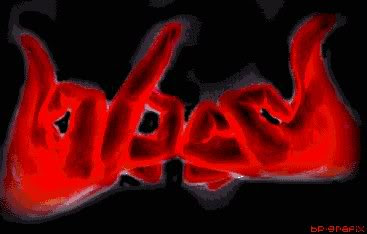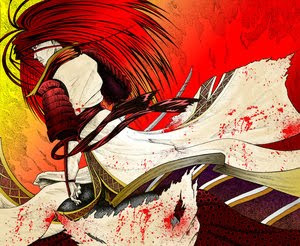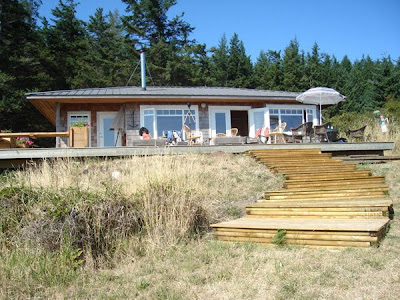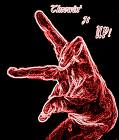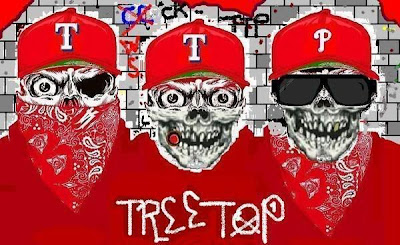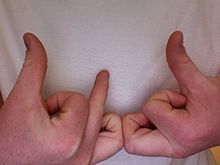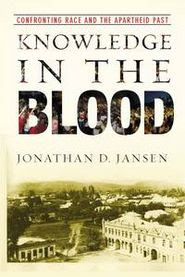
This page is under construction, if you have any information on this gang please forward me the information. Here is some basic information found from the internet.
While the Bloods are not an actual prison gang they are recognized as part of the 11 Security Threat Groups identified by the Texas Department of Criminal Justice.
In the early 70's, the ""Bloods"" were born. More out of necessity than anything else, the "Blood" sets were banded together to protect each other from the rampant Crip menace. The "Bloods" originated when Sylvester Scott and Vincent Owens started the "Compton Pirus", this gang started on West Piru Street in Compton. An event which assisted the rapid growth of the blood sets occurred when the Compton "Crips" had a difference of opinion with the "Pirus", the two gangs had a major fight and the outnumbered Pirus were badly beaten. This prompted a meeting between several fragmented gang sets on Piru Street, the "Denver Lanes", "Laurdes Park Hustlers", "Bishops" and "LA Brims" were in attendance. The "Pirus" aligned themselves with the "Laurdes Park Hustlers" and the "LA Brims", the Brims were eager to join alliance against the "Crips" as the "Crips" recently murdered a Brim gangster and the Brims were too small to exact revenge against the "Crips" without major reprisals. Other gangs who had been threatened or attacked by "Crips" incorporated into Blood sets as well. The Compton "red" gangs are called "Pirus", other "red" gangs such as the "Brims", "Bounty Hunters", "Swans" and "Family" refer to themselves as ""Bloods"". Numerically, the Blood sets are outnumbered by the Crip sets, but "Bloods" are well known for their "take no prisoners" ruthless and violence.
With all these gangs roaming in a relatively small section of the city, gangsters needed a method in which to ID each other, they wanted to avoid attacking gangsters from different sets, but same gang. "Crips" identify themselves with the color blue, this is believed to originate from the colors of Washington high school in south LA. Crip gangsters wear articles of blue clothing, blue and kerchiefs, shoelaces, hair rollers, hats, belts or sweat shirts. A blue article of clothing in a blood hood, can and will get you killed. Other dark colors have been used as well, such as black, brown and purple. If they are unsure of ones gang affiliation, they'll flash a gang "sign" which is basically a form of sign language made with the hands, they also refer to each other as "Cuz" or "Blood" depending to set affiliation.
"Bloods" ID each other with the color "red", school colors of Centennial High School, and obviously red is the color of blood. Like "Crips" who wear blue clothing, "Bloods" wear red. Another color may be used in relation to the name of the set, such as green for the Lime Hood Pirus. They refer to each other as "Blood".
By the 1980's, there were 30,000 gangsters in and around LA. The 80's also saw the explosion of crack cocaine, criminal street gangs were quick to jump on the crack bandwagon which grew into today's gang cancer. The majority of these gangsters were from the inner city ghettos where unemployment is very high and families are living at, or under the poverty level. It's near impossible to tell a 15 year old gangster that joining a gang was a bad thing because it was the gangsters that are making
$300-$500 a day selling crack. The gangsters have what many ghetto youths don't, expensive clothing, new expensive cars, gold "rope" jewelry, wads of cash in their pockets and lots of girls. A common comment I hear is "Why should I work at Mac-Donald's when I can make more money than you?", rebuttals of being a good citizen and about responsibility go in one ear and out the other.
Black gangs have no formal structure to speak of, the older members in their late 20's early 30's, are called the "Shot Callers". Most "Shot Callers" have done hard time in prison where they made "business" contacts, they are the ones who deal in the major acquisition of drugs, the youngsters are often the foot solders who do the selling, fighting and dying. The young members are generally the most dangerous because they're willing to prove their gang loyalty by committing extremely violent acts, which often times includes shooting at, or otherwise fighting with police officers. We find the juveniles are often used to commit violent crimes because they face little, or no jail time and they know it. More than a hundred times they've bragged to me "I'll be home before you're done writing the report", which is true, by law we must release juveniles to their guardians. The juveniles are also the ones who are driving the "G" rides, in my experience 90% of the time.
Because of the large sums of cash made by dealing, these gangs are able to arm themselves with expensive, high quality weapons. Some gangs have actually purchased legitimate businesses to launder the money, one South Central liquor store reported
$500,000 in profits one year, that's a lot of bubble gum and Old English 800. Were finding that more and more professionals like CPA's, accounts and what we call "dope lawyers" are willing to assist these gangs because they are rewarded handsomely for their services. Most gangsters are poorly educated and ill prepared to thrive in the real business world, add a CPA, investment banker and lawyer to help manage the large amounts of cash generated by gangs and they have almost unlimited potential. An unfortunate side effect is that some black owned business from South LA are cynically viewed as dirty, "Death Row Records", a rap music publisher, has long been suspected as a major drug laundering business.
We're also finding more and more dope lawyers defending these gangsters in criminal proceedings, I often wonder how a 18 year unemployed Crip can afford a
$500 per hour Ivy League attorney. Some of these dope lawyers operate under the guise of wanting to give the poor black inner city youth the best defense possible and claim to be working "pro bono" (for free), more than once they've been found with large sums of un taxable cash in backpacks or duffel bags. These attorneys risk falling victim to the short fuse and violent tendencies of these gangsters, which offers an added motivation to make sure their client is acquitted. Rival gangs, or even disgruntled fellow gangsters have more than once ambushed a dope lawyer and stolen his cash reward.
 The sister of a Sydney teenager bashed by a gang of balaclava-clad men says it was revenge for a nightclub incident.
The sister of a Sydney teenager bashed by a gang of balaclava-clad men says it was revenge for a nightclub incident. 
